Economic Analysis: GDP, Business Cycles, and Monetary Policy
VerifiedAdded on 2023/01/11
|5
|723
|94
Homework Assignment
AI Summary
This economics assignment provides solutions to three key questions. Question 1 calculates the doubling time for France and Korea's per capita real GDP, and projects their GDP in 2045, using provided growth rates and initial GDP figures. Question 2 explains the real business cycle theory, emphasizing technological fluctuations' impact on employment and output, and their effects on monetary policy. Question 3 analyzes the expansion of the money supply resulting from a Federal Reserve bond purchase, considering a required reserve ratio of 0.2. The assignment demonstrates an understanding of economic growth, business cycle theory, and monetary policy principles.
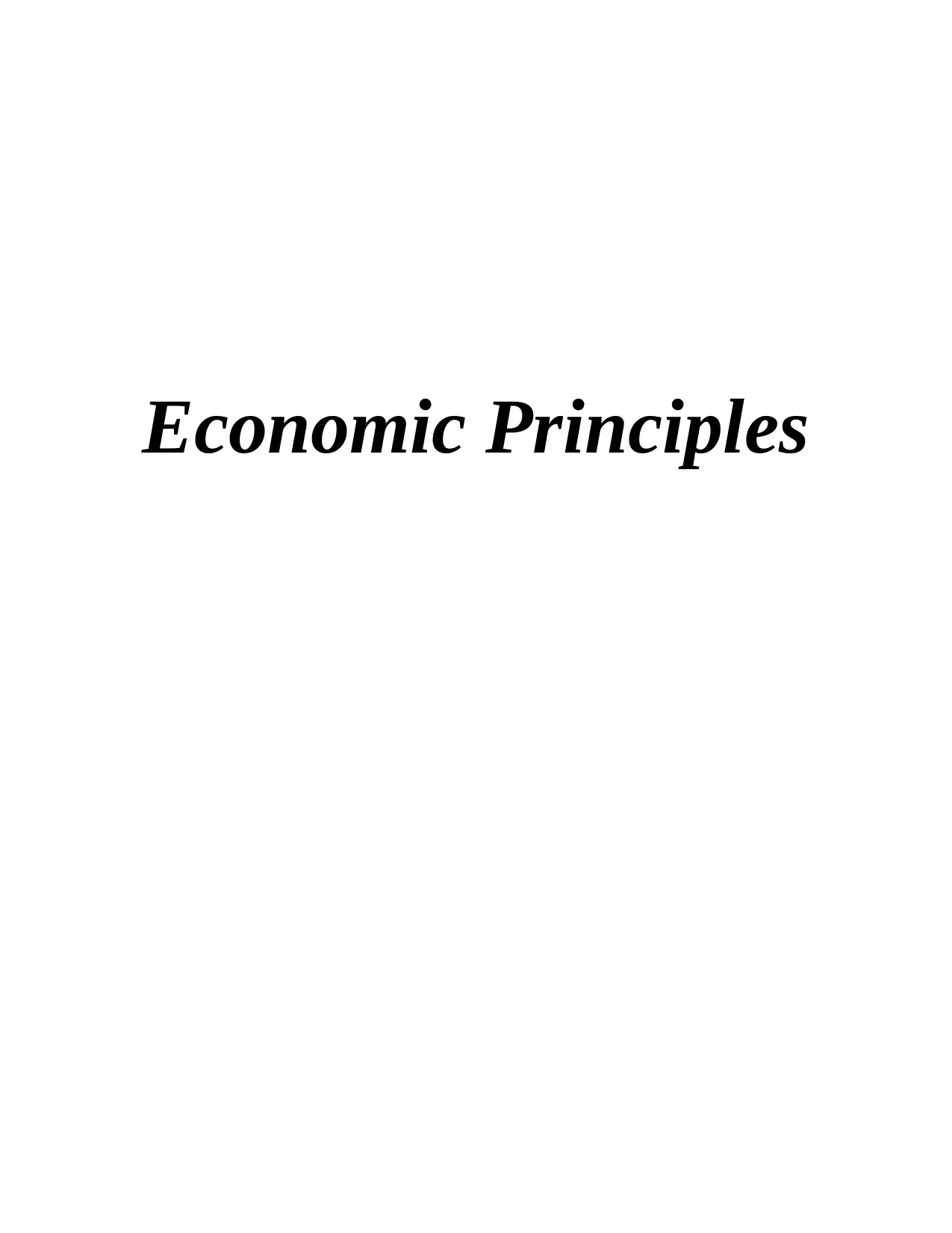
Economic Principles
Paraphrase This Document
Need a fresh take? Get an instant paraphrase of this document with our AI Paraphraser
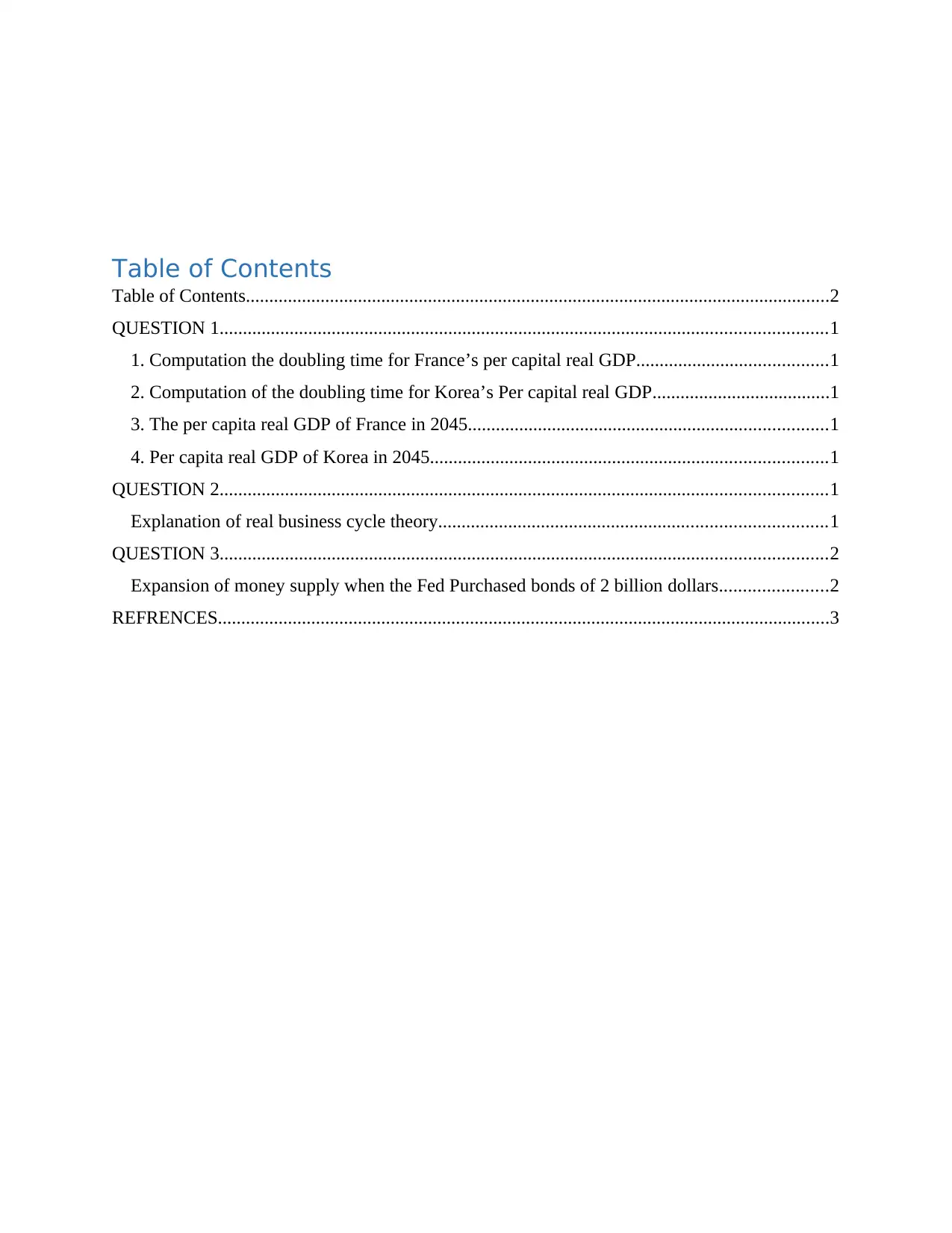
Table of Contents
Table of Contents.............................................................................................................................2
QUESTION 1..................................................................................................................................1
1. Computation the doubling time for France’s per capital real GDP.........................................1
2. Computation of the doubling time for Korea’s Per capital real GDP......................................1
3. The per capita real GDP of France in 2045.............................................................................1
4. Per capita real GDP of Korea in 2045.....................................................................................1
QUESTION 2..................................................................................................................................1
Explanation of real business cycle theory...................................................................................1
QUESTION 3..................................................................................................................................2
Expansion of money supply when the Fed Purchased bonds of 2 billion dollars.......................2
REFRENCES...................................................................................................................................3
Table of Contents.............................................................................................................................2
QUESTION 1..................................................................................................................................1
1. Computation the doubling time for France’s per capital real GDP.........................................1
2. Computation of the doubling time for Korea’s Per capital real GDP......................................1
3. The per capita real GDP of France in 2045.............................................................................1
4. Per capita real GDP of Korea in 2045.....................................................................................1
QUESTION 2..................................................................................................................................1
Explanation of real business cycle theory...................................................................................1
QUESTION 3..................................................................................................................................2
Expansion of money supply when the Fed Purchased bonds of 2 billion dollars.......................2
REFRENCES...................................................................................................................................3
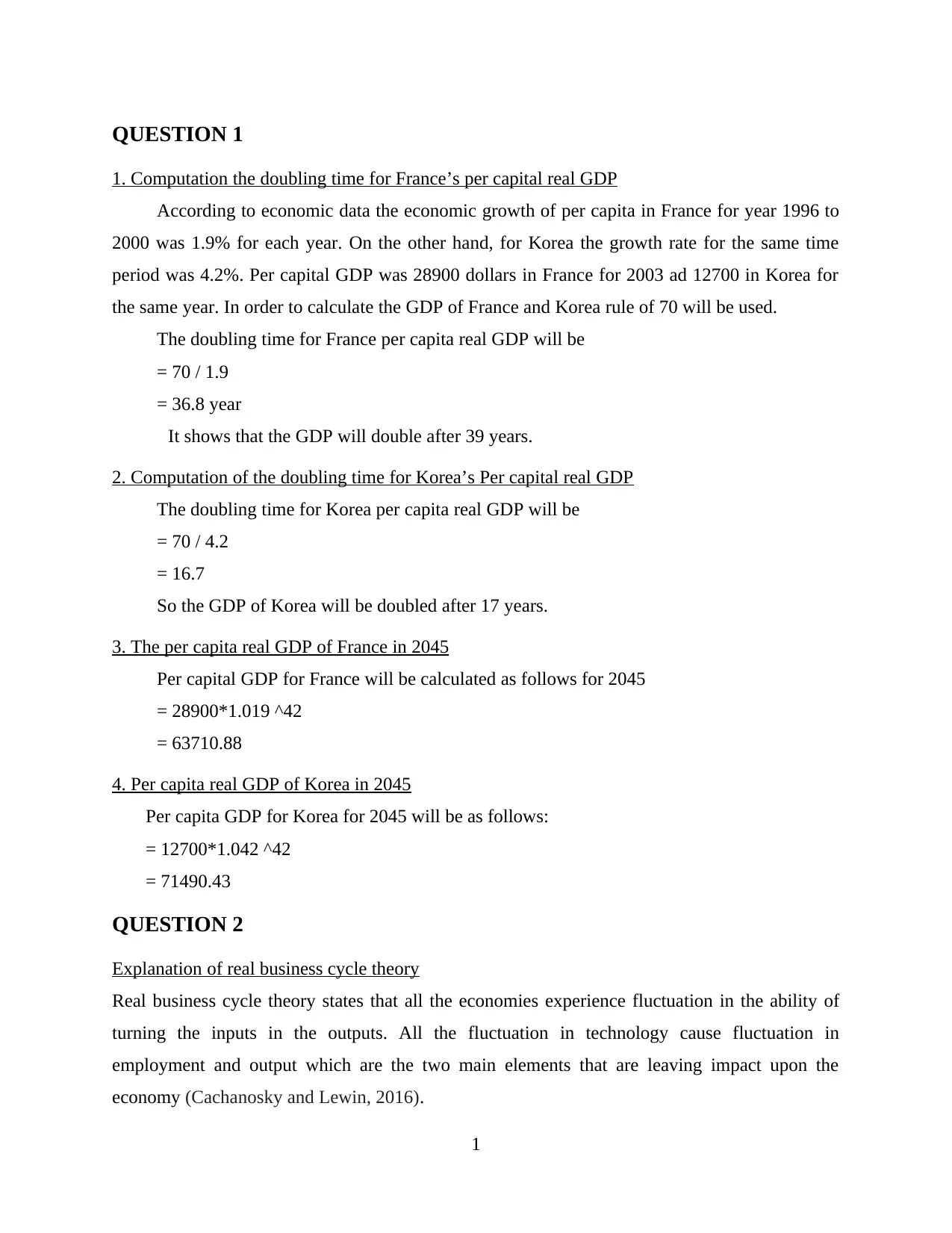
QUESTION 1
1. Computation the doubling time for France’s per capital real GDP
According to economic data the economic growth of per capita in France for year 1996 to
2000 was 1.9% for each year. On the other hand, for Korea the growth rate for the same time
period was 4.2%. Per capital GDP was 28900 dollars in France for 2003 ad 12700 in Korea for
the same year. In order to calculate the GDP of France and Korea rule of 70 will be used.
The doubling time for France per capita real GDP will be
= 70 / 1.9
= 36.8 year
It shows that the GDP will double after 39 years.
2. Computation of the doubling time for Korea’s Per capital real GDP
The doubling time for Korea per capita real GDP will be
= 70 / 4.2
= 16.7
So the GDP of Korea will be doubled after 17 years.
3. The per capita real GDP of France in 2045
Per capital GDP for France will be calculated as follows for 2045
= 28900*1.019 ^42
= 63710.88
4. Per capita real GDP of Korea in 2045
Per capita GDP for Korea for 2045 will be as follows:
= 12700*1.042 ^42
= 71490.43
QUESTION 2
Explanation of real business cycle theory
Real business cycle theory states that all the economies experience fluctuation in the ability of
turning the inputs in the outputs. All the fluctuation in technology cause fluctuation in
employment and output which are the two main elements that are leaving impact upon the
economy (Cachanosky and Lewin, 2016).
1
1. Computation the doubling time for France’s per capital real GDP
According to economic data the economic growth of per capita in France for year 1996 to
2000 was 1.9% for each year. On the other hand, for Korea the growth rate for the same time
period was 4.2%. Per capital GDP was 28900 dollars in France for 2003 ad 12700 in Korea for
the same year. In order to calculate the GDP of France and Korea rule of 70 will be used.
The doubling time for France per capita real GDP will be
= 70 / 1.9
= 36.8 year
It shows that the GDP will double after 39 years.
2. Computation of the doubling time for Korea’s Per capital real GDP
The doubling time for Korea per capita real GDP will be
= 70 / 4.2
= 16.7
So the GDP of Korea will be doubled after 17 years.
3. The per capita real GDP of France in 2045
Per capital GDP for France will be calculated as follows for 2045
= 28900*1.019 ^42
= 63710.88
4. Per capita real GDP of Korea in 2045
Per capita GDP for Korea for 2045 will be as follows:
= 12700*1.042 ^42
= 71490.43
QUESTION 2
Explanation of real business cycle theory
Real business cycle theory states that all the economies experience fluctuation in the ability of
turning the inputs in the outputs. All the fluctuation in technology cause fluctuation in
employment and output which are the two main elements that are leaving impact upon the
economy (Cachanosky and Lewin, 2016).
1
⊘ This is a preview!⊘
Do you want full access?
Subscribe today to unlock all pages.

Trusted by 1+ million students worldwide
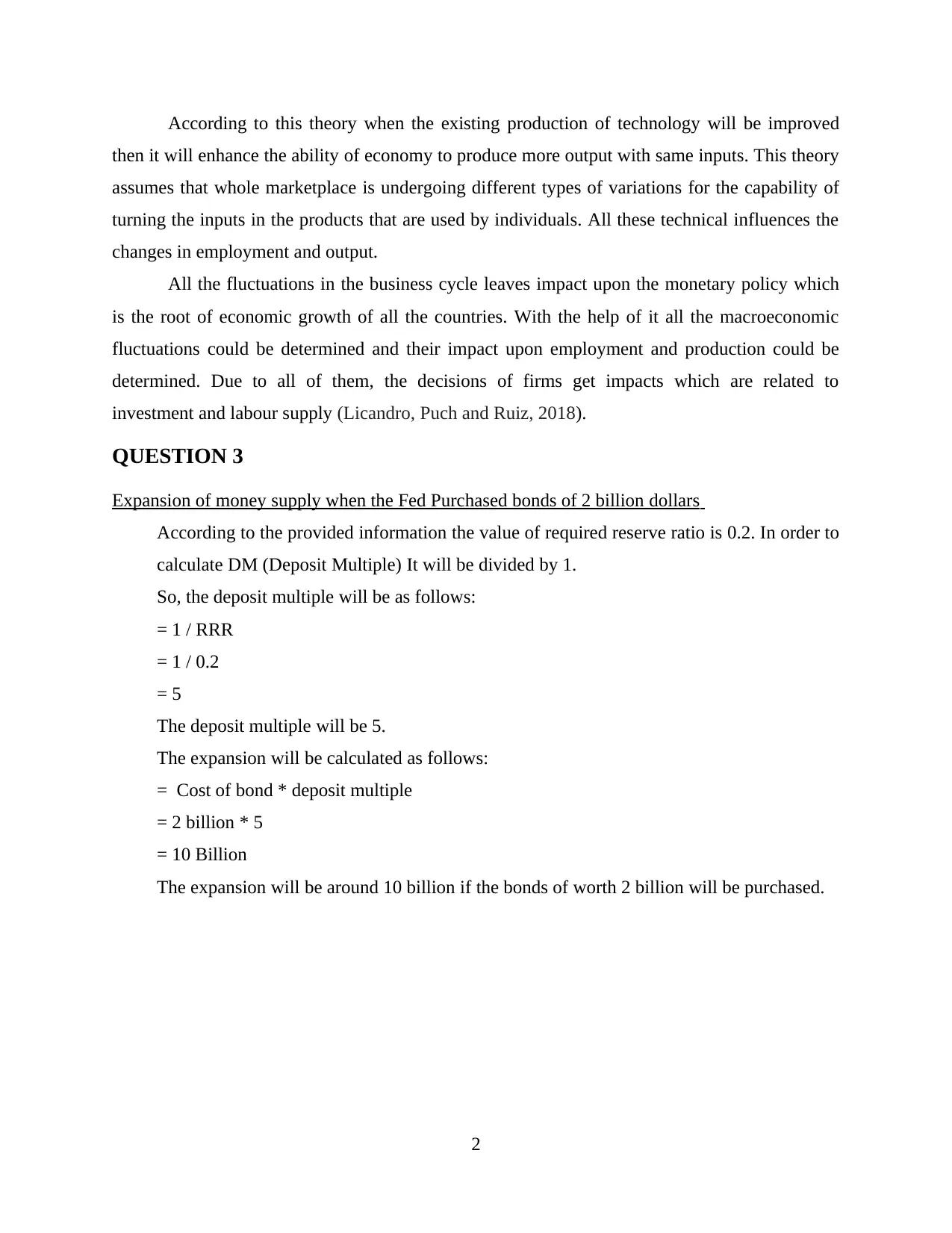
According to this theory when the existing production of technology will be improved
then it will enhance the ability of economy to produce more output with same inputs. This theory
assumes that whole marketplace is undergoing different types of variations for the capability of
turning the inputs in the products that are used by individuals. All these technical influences the
changes in employment and output.
All the fluctuations in the business cycle leaves impact upon the monetary policy which
is the root of economic growth of all the countries. With the help of it all the macroeconomic
fluctuations could be determined and their impact upon employment and production could be
determined. Due to all of them, the decisions of firms get impacts which are related to
investment and labour supply (Licandro, Puch and Ruiz, 2018).
QUESTION 3
Expansion of money supply when the Fed Purchased bonds of 2 billion dollars
According to the provided information the value of required reserve ratio is 0.2. In order to
calculate DM (Deposit Multiple) It will be divided by 1.
So, the deposit multiple will be as follows:
= 1 / RRR
= 1 / 0.2
= 5
The deposit multiple will be 5.
The expansion will be calculated as follows:
= Cost of bond * deposit multiple
= 2 billion * 5
= 10 Billion
The expansion will be around 10 billion if the bonds of worth 2 billion will be purchased.
2
then it will enhance the ability of economy to produce more output with same inputs. This theory
assumes that whole marketplace is undergoing different types of variations for the capability of
turning the inputs in the products that are used by individuals. All these technical influences the
changes in employment and output.
All the fluctuations in the business cycle leaves impact upon the monetary policy which
is the root of economic growth of all the countries. With the help of it all the macroeconomic
fluctuations could be determined and their impact upon employment and production could be
determined. Due to all of them, the decisions of firms get impacts which are related to
investment and labour supply (Licandro, Puch and Ruiz, 2018).
QUESTION 3
Expansion of money supply when the Fed Purchased bonds of 2 billion dollars
According to the provided information the value of required reserve ratio is 0.2. In order to
calculate DM (Deposit Multiple) It will be divided by 1.
So, the deposit multiple will be as follows:
= 1 / RRR
= 1 / 0.2
= 5
The deposit multiple will be 5.
The expansion will be calculated as follows:
= Cost of bond * deposit multiple
= 2 billion * 5
= 10 Billion
The expansion will be around 10 billion if the bonds of worth 2 billion will be purchased.
2
Paraphrase This Document
Need a fresh take? Get an instant paraphrase of this document with our AI Paraphraser
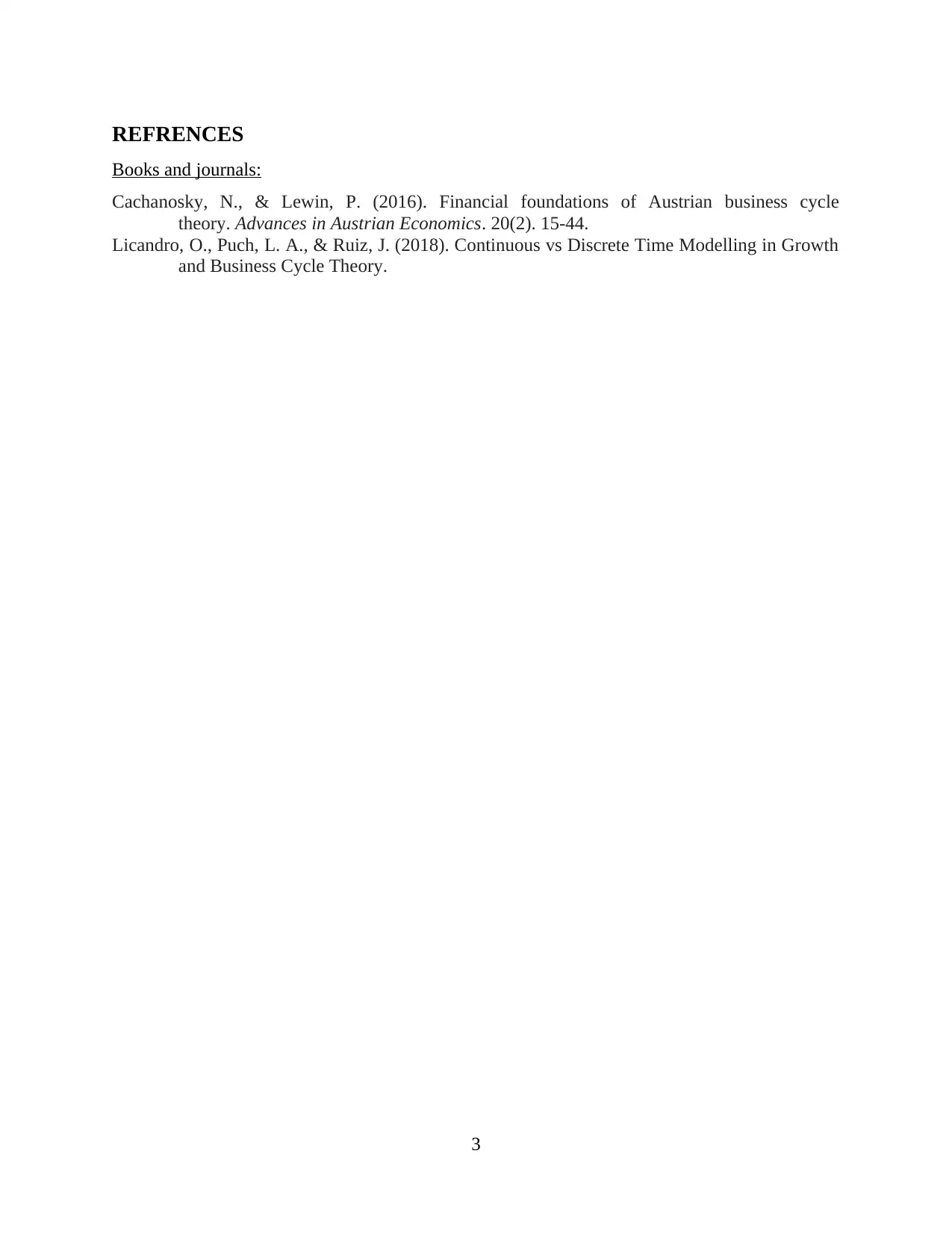
REFRENCES
Books and journals:
Cachanosky, N., & Lewin, P. (2016). Financial foundations of Austrian business cycle
theory. Advances in Austrian Economics. 20(2). 15-44.
Licandro, O., Puch, L. A., & Ruiz, J. (2018). Continuous vs Discrete Time Modelling in Growth
and Business Cycle Theory.
3
Books and journals:
Cachanosky, N., & Lewin, P. (2016). Financial foundations of Austrian business cycle
theory. Advances in Austrian Economics. 20(2). 15-44.
Licandro, O., Puch, L. A., & Ruiz, J. (2018). Continuous vs Discrete Time Modelling in Growth
and Business Cycle Theory.
3
1 out of 5
Your All-in-One AI-Powered Toolkit for Academic Success.
+13062052269
info@desklib.com
Available 24*7 on WhatsApp / Email
![[object Object]](/_next/static/media/star-bottom.7253800d.svg)
Unlock your academic potential
Copyright © 2020–2025 A2Z Services. All Rights Reserved. Developed and managed by ZUCOL.
